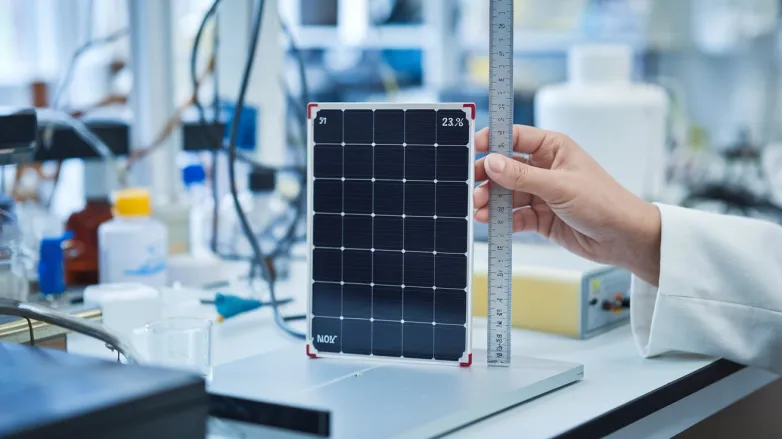Breakthrough in 23.2% Efficient Low Band Gap Solar Cells
- Revolutionizing solar energy: New lead-tin perovskite cells achieve over 23.2% efficiency and a 66% lifespan boost, paving the way for durable, cost-effective solar solutions.

Researchers from the University of Surrey and Imperial College London have developed highly efficient lead-tin perovskite solar cells, achieving a power conversion efficiency (PCE) of over 23.2%. This innovative cyanogen management strategy not only enhances performance but also boosts the device's lifespan by 66%, addressing previously overlooked degradation mechanisms. The findings contribute to the potential for more durable and cost-effective solar panels, signaling a significant advancement toward cleaner energy alternatives.
The team attributes these improvements to better understanding and addressing efficiency losses from the hole transport layer. By incorporating an iodine-reducing agent, the researchers successfully inhibited detrimental chemical reactions, increasing both efficiency and stability. The University of Surrey plans to further refine these materials and has initiated the construction of a 12.5MW solar farm to test the new solar modules, aiming for broader commercial adoption of perovskite technology.
How do lead-tin perovskite solar cells improve efficiency and longevity in solar technology?
How Lead-Tin Perovskite Solar Cells Improve Efficiency and Longevity in Solar Technology
High Power Conversion Efficiency (PCE):
- Lead-tin perovskite solar cells are showing remarkable PCE rates (over 23.2%), positioning them as competitive alternatives to traditional silicon-based solar cells.
Innovation in Cyanogen Management:
- The introduction of a cyanogen management strategy allows for better control over the chemical environment of the solar cells, significantly enhancing their overall performance.
Longevity Improvements:
- The new research suggests a lifespans increase of 66% for these solar cells by tackling previously ignored degradation pathways, which can lead to longer-term energy production.
Addressing Degradation Mechanisms:
- By identifying and mitigating specific degradation mechanisms, particularly in the hole transport layer, researchers have managed to enhance the stability and durability of the solar cells.
Use of Iodine-Reducing Agents:
- Incorporating iodine-reducing agents helps in minimizing harmful chemical reactions, which are critical in improving both the efficiency and the lifespan of the solar technologies.
Scalability Potential:
- The feasibility of large-scale manufacturing is heightened thanks to the relatively simple materials and processes involved in producing lead-tin perovskite solar cells.
Cost-Effectiveness:
- The use of abundant and less expensive materials like lead and tin in perovskite cells can potentially drive down production costs, making solar technology more accessible to diverse markets.
Environmental Considerations:
- Although lead is a toxic material, ongoing research is focused on finding environmentally safer alternatives while retaining efficiency, which can address concerns over sustainability in solar technologies.
Integration with Existing Infrastructure:
- These enhanced solar cells can be more easily integrated with current solar energy systems, improving the overall efficiency of solar power generation and peaking interest in hybrid energy solutions.
Field Testing and Commercial Adoption:
- The University of Surrey is committed to field testing the new modules through solar farms, providing real-world data that can accelerate commercial adoption and acceptance of lead-tin perovskite technology.
Future Research Directions:
- Continued research aims to refine materials and methods for even greater efficiency and longevity, potentially leading to breakthroughs that would further redefine solar technology on a global scale.
This multifaceted approach to improving lead-tin perovskite solar cells not only enhances their market viability but also contributes significantly to the advancement of renewable energy solutions, steering toward a cleaner and more sustainable future.
Also read


